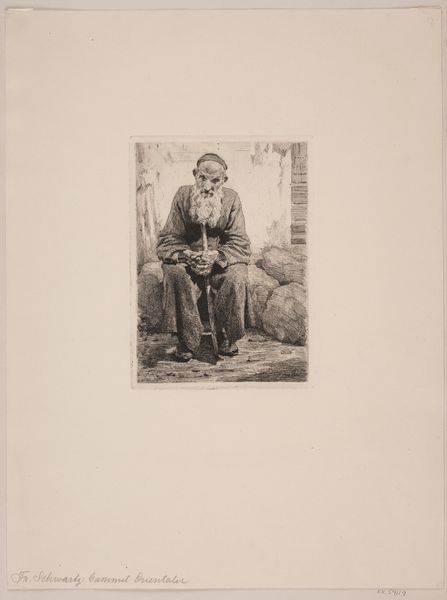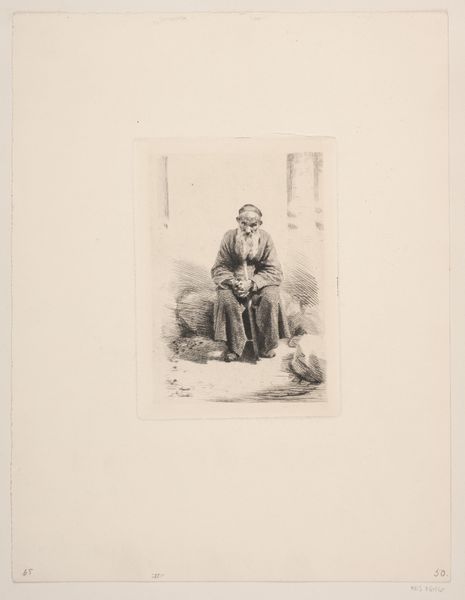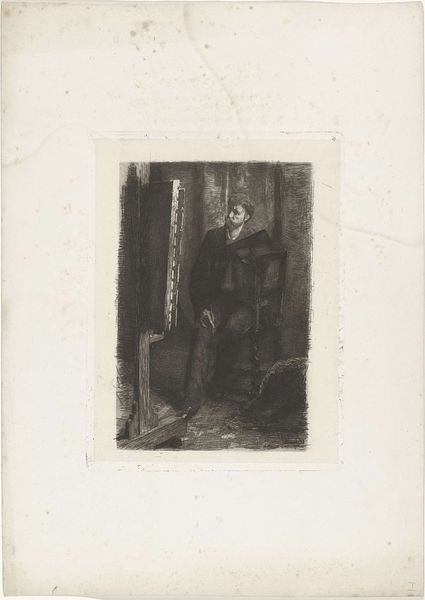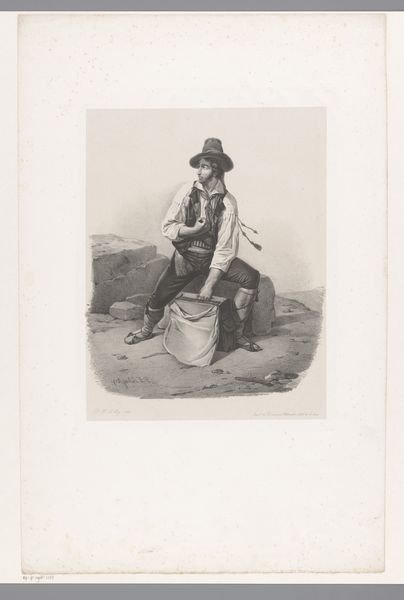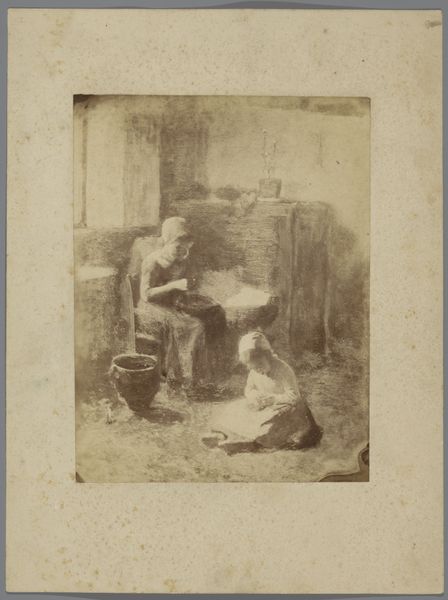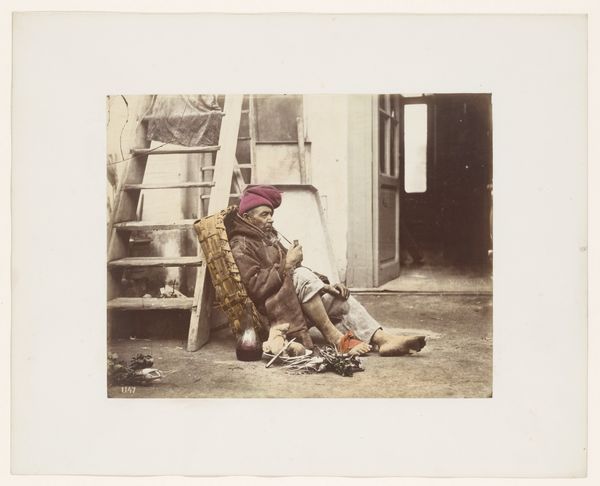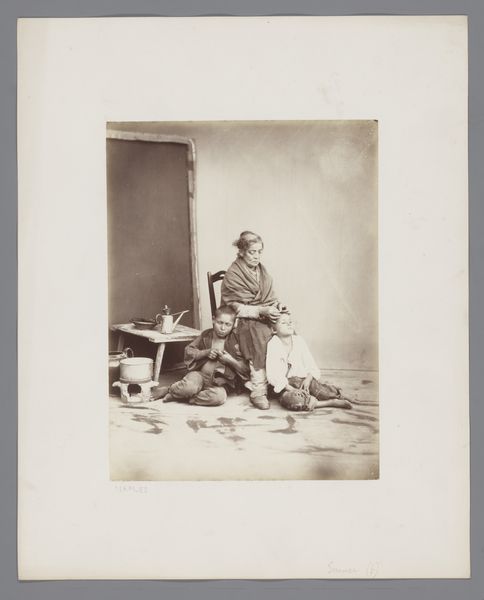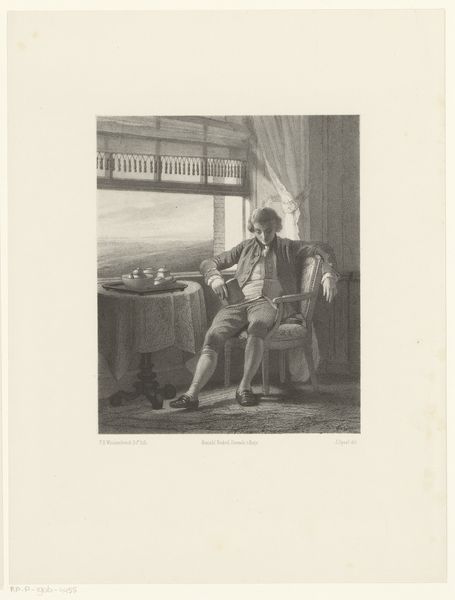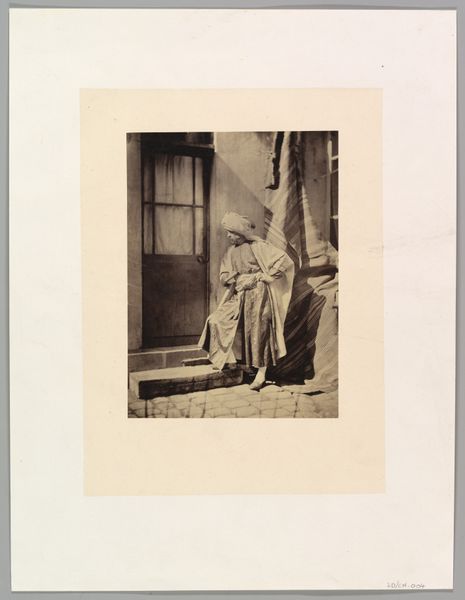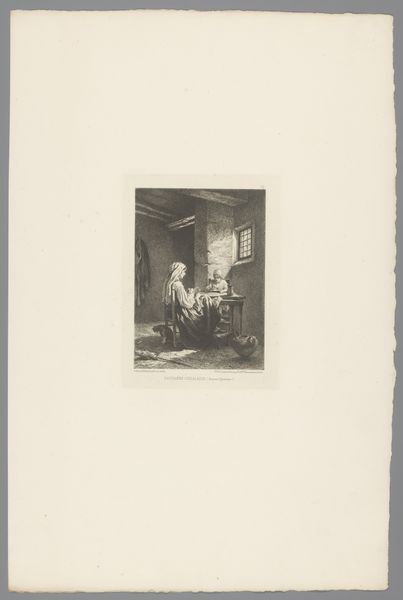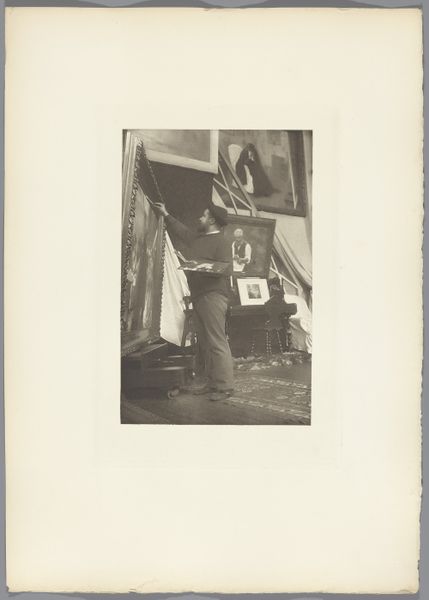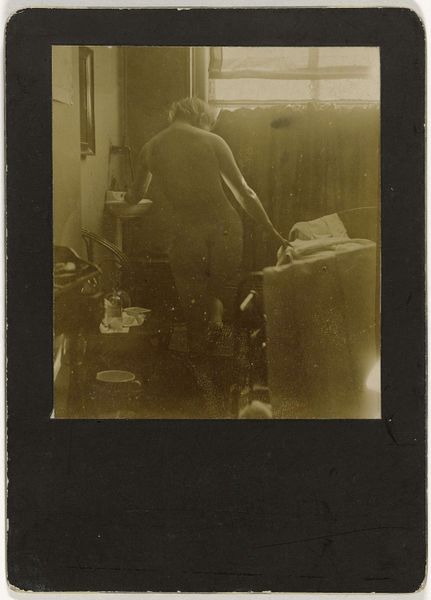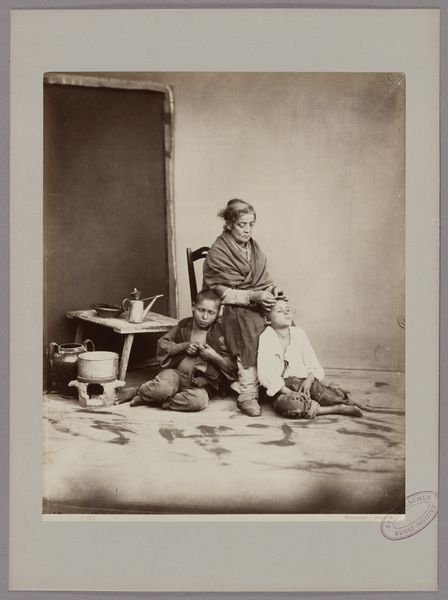
Dimensions: height 202 mm, width 154 mm, height 275 mm, width 380 mm
Copyright: Rijks Museum: Open Domain
Editor: Here we have a gelatin-silver print by Horatio Ross, made sometime between 1855 and 1886, called *Organ Grinder with a Little Monkey*. The photograph is sepia-toned and it feels incredibly poignant to me; a melancholic commentary on society, perhaps. What’s your read? Curator: Indeed. Given the social context of the 19th century, these types of images gained traction in public exhibitions and prints precisely because they documented marginalized individuals in society. Before social work or government support, photographs like these were some of the ways the public encountered—and hopefully pitied— the very poor. Notice anything specific about how Ross seems to capture the organ grinder's presence? Editor: There's such a gentleness in his gaze, and how he's holding the monkey close to him. He looks so tired but caring. It challenges a stereotypical view of street performers as simply exploitative. Curator: Precisely. Also, consider where it was exhibited. Genre painting was having its heydey as well; were the critics equally generous to the subject matter here? Did some critique this as poverty tourism? I ask because photography then becomes part of a larger political project. Editor: I didn’t think about the way viewers would have circulated the photograph through media – influencing public attitudes, one way or another. Curator: Exactly. And those circulations were always mediated by class, access, distribution, and other forces shaping public imagery. What have you learned? Editor: It’s fascinating to consider how an image can function as social commentary, and how deeply embedded in social politics photographs can be, even those that appear to just capture a single moment in time. Curator: And a single picture helps us rethink that complexity. The ‘snapshot’ in time offers such wealth in socio-political complexity, particularly its consumption.
Comments
rijksmuseum about 2 years ago
⋮
Organ grinders with monkeys were a familiar sight on the street in the 19th century. Often from Italy, poorly dressed, and barely able to make a living, they constituted an ‘interesting’ motif, just like beggars, drifters and street urchins. The wretched existence of such picturesque ‘types’ was a popular subject among both photographers and artists.
Join the conversation
Join millions of artists and users on Artera today and experience the ultimate creative platform.
